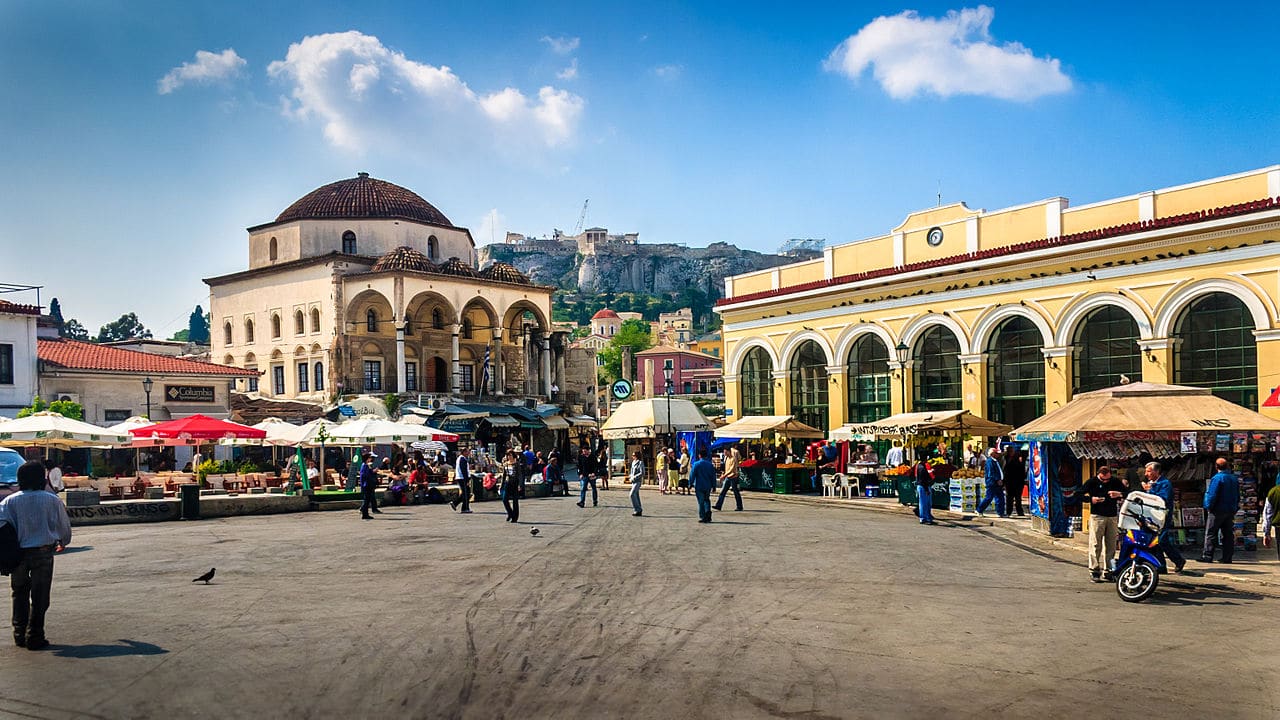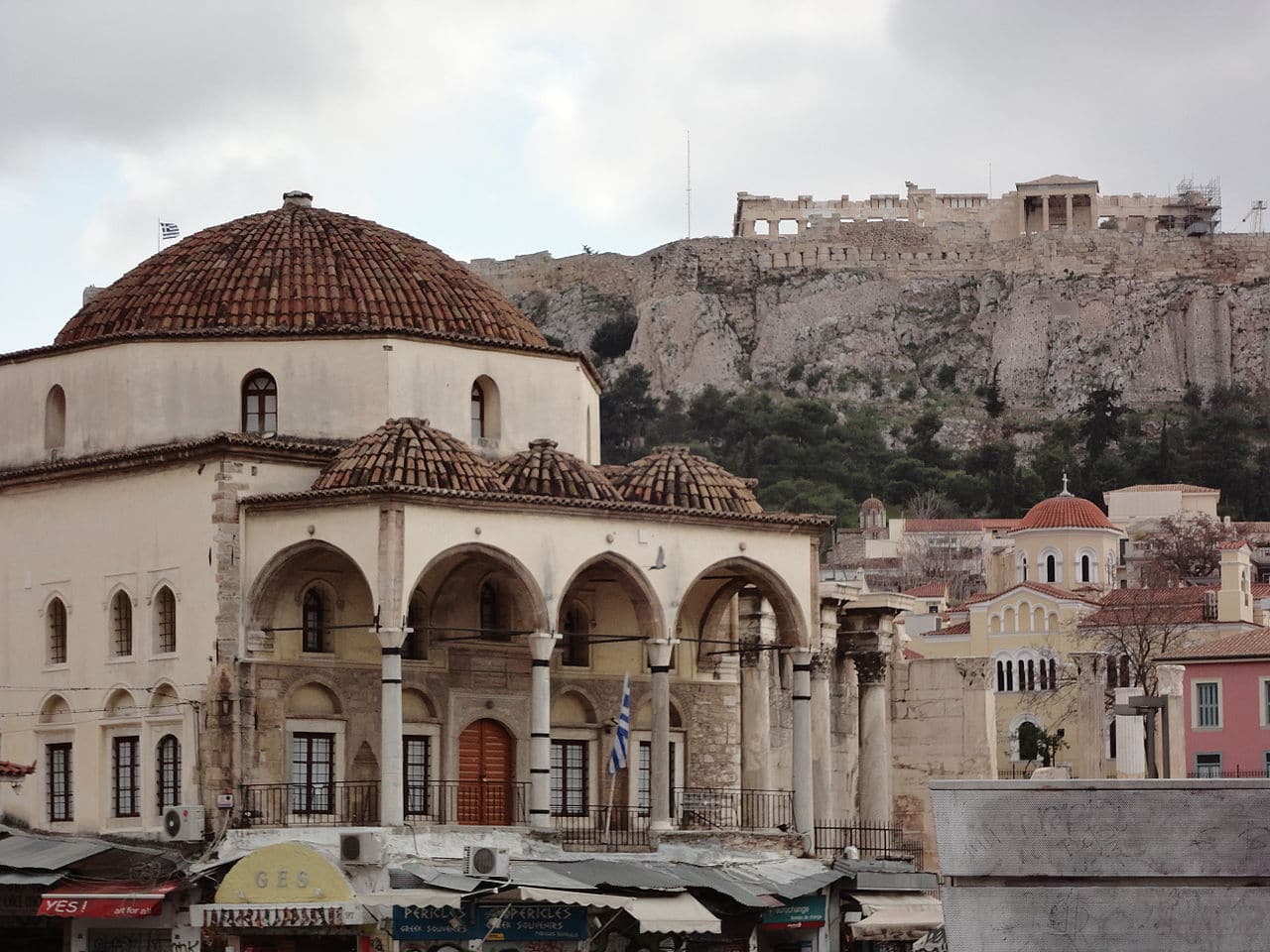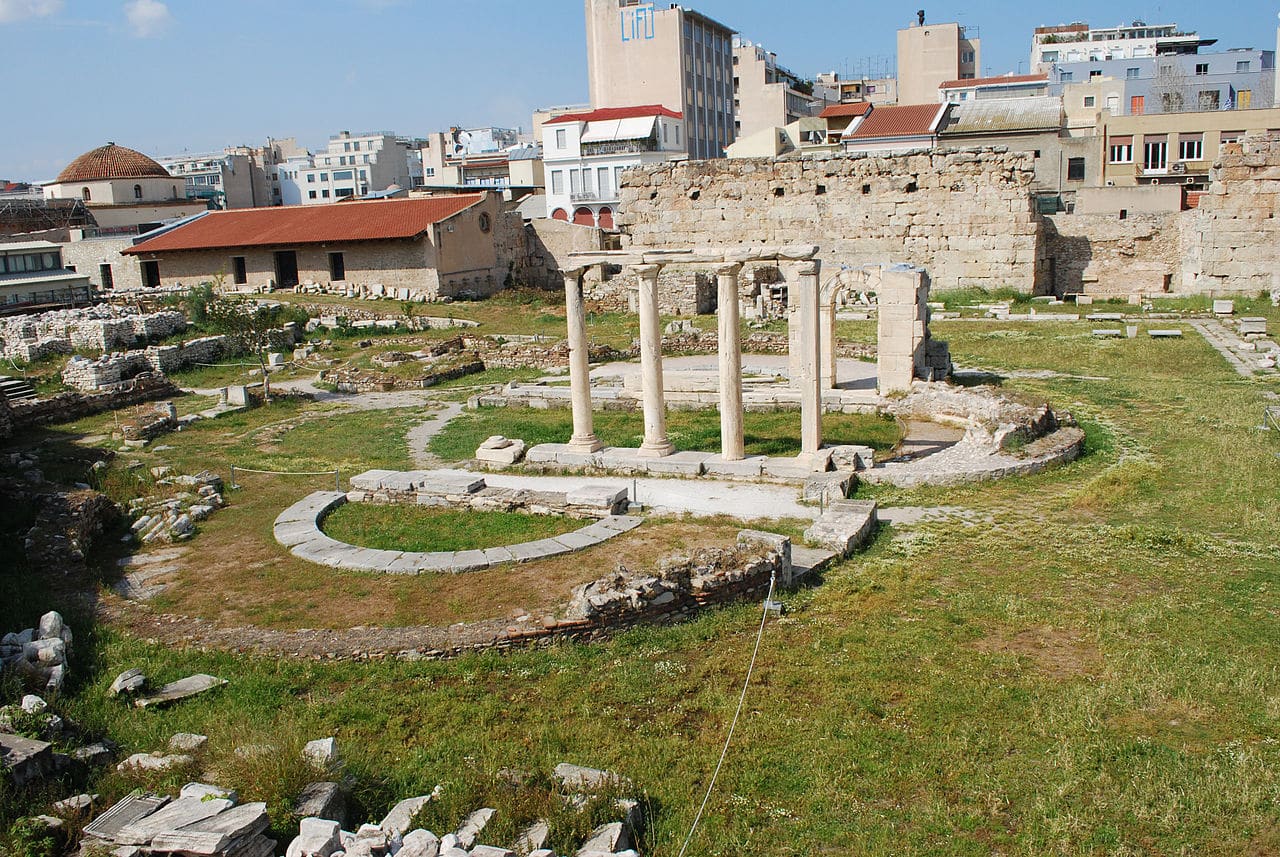
Monastiraki, the flea market in Athens, curiously has nothing to do with these pesky parasites. It receives this name because many people congregate there who sell all kinds of used objects at good prices. It is an expression that is equivalent to ours of "trail" and that comes from the French "Marche aux puces".
It is in the Monastiraki square, from which it takes its other name and which in turn means "Little monastery" for the one who presided over it. But it spans the Pandrossou, Adrianou and Ermou streets, as well as many other alleys in the area. If you want to know a little more about this exciting place, we invite you to continue reading.
What to see in Monastiraki, the flea market of Athens
Monastiraki is, together with Plate, the neighborhood that separates it from Acropolis, liveliest area of Athens. Every day in the square and adjacent streets a legion of sellers who set up their mobile stalls to trade all kinds of products. But, in addition, Monastiraki, the flea market of Athens, has more to offer you.
The church of Pantanassa
It was part of the small monastery that gives its name to the square and was built in the XNUMXth century. byzantine styleIt is a small temple characterized by its austerity, but also by its beauty and by the contrast it offers you with the bustling modern life of Monastiraki.
Tzisdarakis Mosque
Built in the XNUMXth century, it is an Ottoman mosque that is just twenty meters from the previous church. It was also called the Lower Market Mosque due to its proximity to the Agora of Athens from Roman times. It currently houses part of the dependencies of the Greek Folk Art Museum, where you can see magnificent collections of ceramics.

Tzisdarakis Mosque
Nearby is also the Fethiyé mosque, also built by the Ottomans in the XNUMXth century as a tribute to Mehmet the Conqueror when he visited Athens.
Roman Agora, very close to Monastiraki, the flea market of Athens
As we told you, the Roman Agora is located between Monastiraki and the Plaka neighborhood. It is currently in ruins, but you can still see in it the Tower of the Winds, an ancient water clock from the XNUMXst century BC that also served as a weather vane, and the Athena Arquegetis Gate, from the same period and erected in honor of the patron saint of Athens.
You will also find in the Agora the remains of the Hadrian's Library, of which some of the spectacular corinthian columns that was on its west facade. It was built by the emperor after whom it is named in 132 AD to function as a reading and meeting room and could even house a swimming pool.
Monastiraki metro station
It is very close to the Agora and is one of the best access routes to the flea market in Athens. It receives convoys from both the line one and the three and offers you another attraction. In the same station they are exposed Archaeological pieces that were found when it was built.
Monastiraki market
If Monastiraki is called the Athens flea market, it is precisely because of the amount of stalls that congregate in the square. Therefore, we would leave this article incomplete if we did not tell you a little more about the market itself.
In the square and its nearby streets there are numerous shops. But, in addition, a huge number of sellers congregate who install their roadside stands to offer you all kinds of used products, from military insignia to clothing, food, crafts or music.

Byzantine Church of Pantanassa
It is a daily market, but the best time for you to visit is Sunday morning. That day the vendors of antiques. And, if you go early, you can find real gems at a great price. Regarding this, do not forget bargain, is a tradition in this market.
Cafes and restaurants
Another essential activity if you visit Monastiraki, the flea market of Athens, is to sit in one of the terraces of cafes that abound in the area. You will find them, above all, in Mitropoleos and Adrianou streets.
In them, you can take a break after visiting the monuments and touring the street vendors. The traditional thing, if you are hungry, is that you order the typical souvlaki. In case you don't know it, we will tell you that it looks like our Moorish skewer.
They are pieces of pork, lamb, cow or chicken between which pieces of vegetables are interspersed. It is eaten inside a pita bread and served on a bed of chips or salad. A variant of this dish is the kalamaki, whose difference is that the meat has been previously marinated in olive oil, lemon juice, oregano, mint and thyme. It also has black pepper, but this is added when roasted in charcoal.
However, the cafes around Monastiraki also offer you other tapas of Greek cuisine. The custom of tapas is not only Spanish, it is also common in Greece. Between the mezedes (that's what they call tapas) you have creams like melitzanosalata, which is made with roasted aubergines, garlic, parsley, olive oil, lemon juice and salt or pepper, and the tzatziki, a kind of yogurt with cucumber, sliced garlic and olive oil.

Columns of Hadrian's Library
You can also ask saganaki, which is cheese fried in olive oil and accompanied by drained lemon, or kolokizokef you, a vegetable croquette that is delicious. It has grated zucchini, red onion, salt, flour, mint and pepper. And it is also recommended Keftedakia, a pork meatball seasoned with herbs and spices.
In any case, whatever you order, look at the prices because they are not usually cheap. Monastiraki is one of the most visited places by tourists in the Greek capital. And so much demand makes the hoteliers in the area charge expensive for their products.
In conclusion, Monastiraki, the flea market of AthensIt is much more than a shopping area. As with our traces, it also offers you several monuments that you can visit and numerous cafes and restaurants where you can recharge your batteries while savoring the delicious Greek cuisine. Don't you want to meet him?